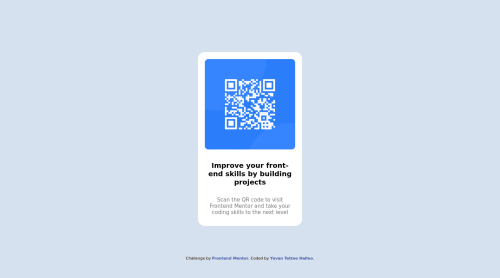Responsive Qr code

Solution retrospective
Hi, is there any problem with my code?
Please log in to post a comment
Log in with GitHubCommunity feedback
- @AdrianoEscarabote
Hello yuvan, how are you? I truly loved your project's outcome, however I have some advice that I hope you'll find useful:
To improve the responsiveness of the project, we can do this:
.container .QR-card { max-width: 300px; height: auto; }avoid using
px, If your web content font sizes are set to absolute units, such as pixels, the user will not be able to re-size the text or control the font size based on their needs. if you want to keep using px for development and then format the whole code to rem, you can use this vscode extension: px to remThe remainder is excellent.
I hope it's useful. 👍
Marked as helpful - @scottttabor
Hey Yuvan! I think for the most part your code looks good! It matches closely with the initial design. I am a newbie when it comes to coding so feel free to take my advice with a grain of salt, but the only thing I saw in your stylesheet is that you didn't include the font weights for the text on the card. In the style guide it mentions that the font weights were 400 and 700. I don't know how crucial this would be in an actual production setting, but it might be important. I believe the "heading text" would be the 700 weight, while the text after would be 400. Thats just my eyeball test. But again, other than that I thought your code looked good. Clean and precise.
Marked as helpful
Join our Discord community
Join thousands of Frontend Mentor community members taking the challenges, sharing resources, helping each other, and chatting about all things front-end!
Join our Discord